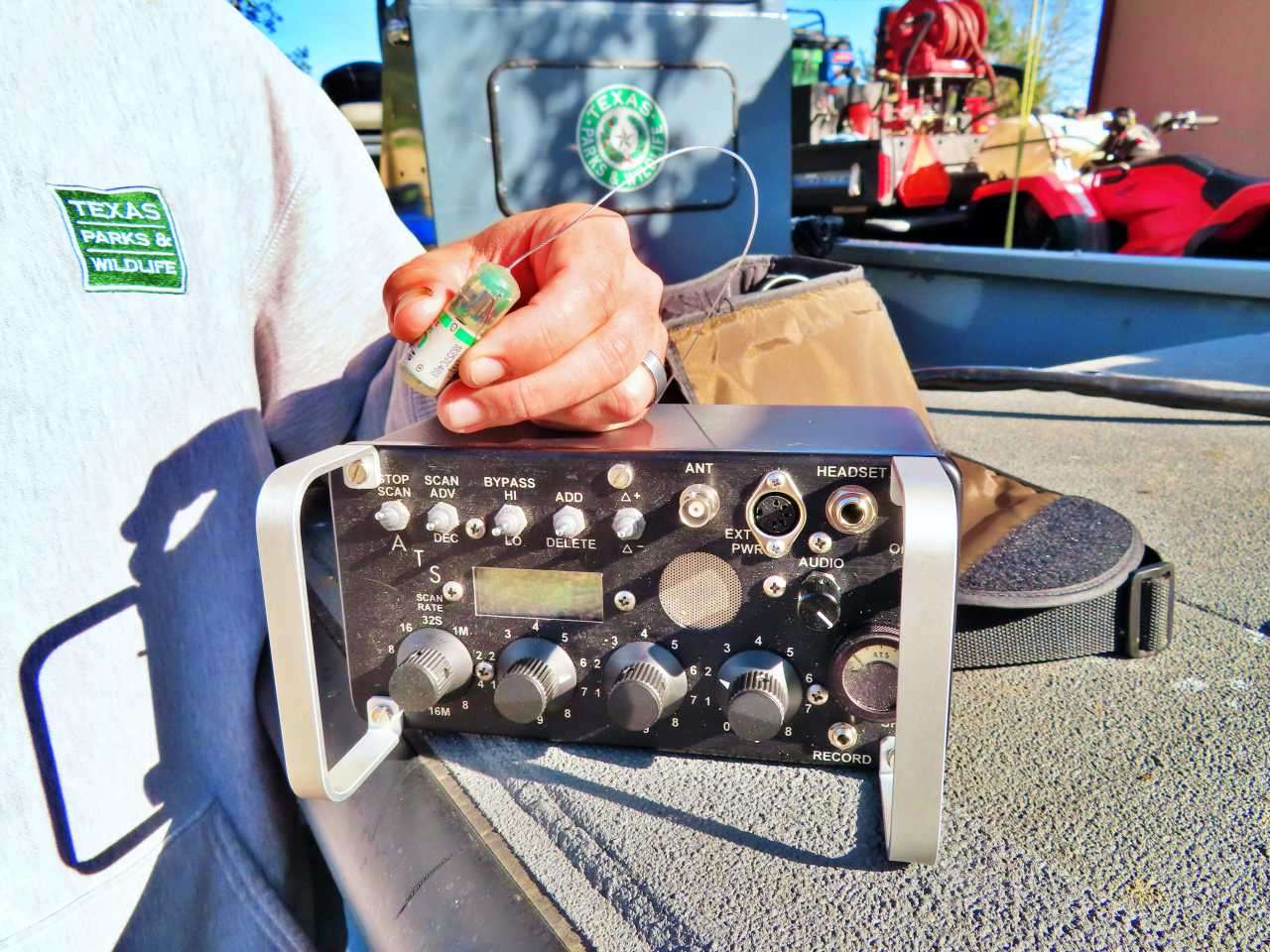
Quitman, Texas —Are largemouth in highly pressured fisheries boat shy? Texas Parks and Wildlife Department aims to find out with a unique tracking study underway on Lake Fork.
Lake Fork’s reputation for producing catches of big bass is legendary. Thirty of Texas’ Top 50 largemouth were caught there, including the current state record weighing 18.18 pounds. The lake receives plenty of attention from leisure anglers, guides and their clients. Add the many tournaments, some with more than 1,000 anglers, and it all adds up on a lake of 27,000 acres.
FROM BUST TO REBOUND
Lake Fork experienced a severe drought in 2011 when the lake level dropped 7 feet. Plants sprouted up on the dry shoreline, a good sign for the bass that use them for nursery habitat. The lake returned to full pool in 2014. Expectations were high of the trophy fishery experiencing a rebirth.
“Everyone expected all the flooded terrestrial plants to jumpstart the year-class recruitment,” said Jake Norman, a district supervisor who oversees the lake.
Just as expected the flooded shoreline habitat did its job. Fifty-plus fish days were common, although catch sizes were well under the 16- to 24-inch slot. Angler attitude remained positive, with the belief that good days were ahead as the fish eventually grew through the slot. Those days never came, at least according to angler experiences.
“We began getting a lot of feedback,” said Norman.
Anglers persisted in wanting to know why fish they were catching continued to fall below the magic 24-inch mark. Electrofishing data showed stability in the size structure and abundance of largemouth through 2019. The data and feedback from anglers catching the fish didn’t line up.
“I believed them, something was off,” said Norman. “I get out on the lake as much as I can and experienced the same thing.”
ARE THEY BOAT SHY?
TPWD decided to research the problem in a most unique way. With electrofishing data showing the bass population in good form, biologists began to wonder if catch and size rates were declining due to something else.
Could the bass population be growing conditioned to the presence of boats and angler pressure? That was the question to be solved.
Last spring, small radio transmitters were implanted in 23 largemouth to find out. The fish will be tracked using a receiver allowing biologists to home in on their specific locations. Tracking will occur every other week, and more frequently following tournaments. Battery life of the transmitters is about two years, so the study will continue until the fish can’t be found. Once located, biologists will attempt to catch the fish using conventional angling methods.
“We want to monitor the fish as they grow through the slot, and find out if they are developing new behaviors and habits attributed to anglers,” said Norman. “That’s why we are tracking fish between 16 inches and 21.5 inches.”
“When you look at Fork, maybe they are growing conditioned to avoid some of the common areas where anglers continue to fish for them,” he continued. “Maybe as they grow, they learn to avoid such areas.”
Or, maybe the fish are staying put but have wised up to the nonstop parade of lures.
“What makes this study unique is we are looking to see how the fish respond to the presence of boat noise when we locate them,” said Norman.
When a fish is located, the biologists idle around in close proximity to see if the fish responds to the boat. Casts are made and responses recorded, along with traditional tracking data like location, depth, ambient conditions and more.
SURVEY SAYS
So far, 156 total observations, or encounters, have been recorded thus far. About 50% of the observations showed a clear reaction to the approaching TPWD boats. Most of the surveyed fish remained in shallow water, making them even more prone to reacting to outboard motor noise, and then angling pressure.
“The big takeaway was those fish are boat shy, constantly moving,” said Norman. “In deeper water though, the fish are moving tremendous bait schools, so we eliminated them from the data.”
The sum of the whole is about 30% of the tracked fish are 100% responsive to the presence of an approaching boat.
“I go back to the anglers, myself and included, and say that’s 30 percent of the fish that are more challenging to catch before you even pick up a rod and reel,” said Norman. “They are running on you before you make a cast.”
WIN-WIN FOR ANGLERS
Norman said those results are only the beginning of the findings. More data means the ability to widen the scope of what they want to find out. Seasonal movements, weather changes, spawning behavior and more are in the plans.
“Giving anglers more information to improve their fishing success is the goal,” he said. “Learning more about bass behavior and how it impacts angler success is how we’ll do it.”

